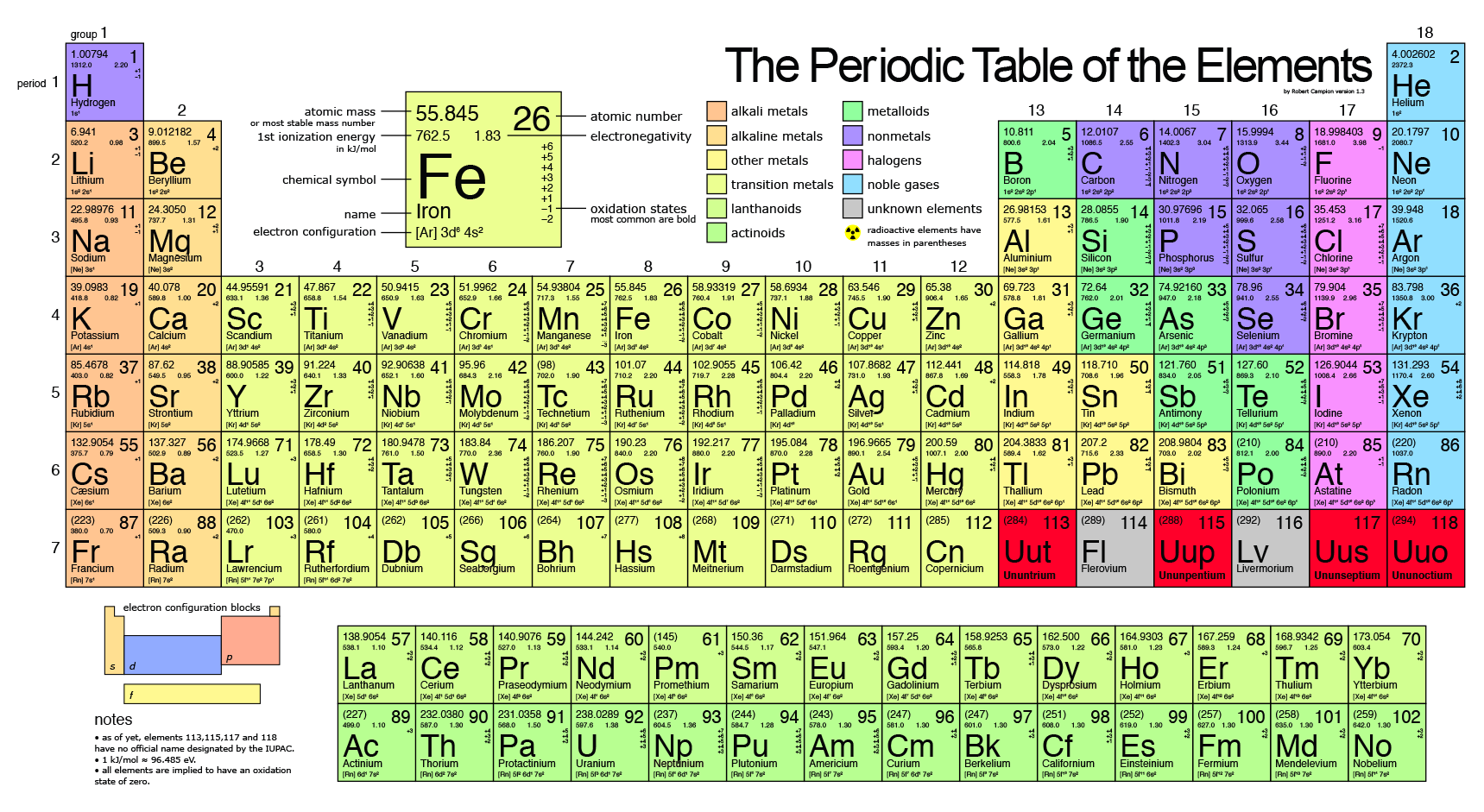Why don't any of the isotopes of natural iron have the atomic mass of 55.85 amu, if the number listed in the periodic table is 55.85 amu?
1 Answer
Since atomic mass is the average of the isotopic masses, you shouldn't expect the atomic mass on the periodic table to match the exact isotopic masses unless there is an extremely significant abundance of one particular isotope (e.g. nearly
For iron, the following isotopes exist, with these
#""^54 "Fe"# ,#5.845%# ,#M_(I,1) = 53.9396105_7# #""^56 "Fe"# ,#91.754%# ,#M_(I,2) = 55.9349375_7# #""^57 "Fe"# ,#2.119%# ,#M_(I,3) = 56.9353940_7# #""^58 "Fe"# ,#0.282%# ,#M_(I,4) = 57.9332756_8#
Note: the subscripted digit is the last uncertain digit.
From this we can find the atomic mass listed on the periodic table by using the percent found in nature of each isotope to calculate a weighted average based on all major isotopes.
You can think of the
So, the relative atomic mass
#color(blue)(M_r)#
#= sum_(i)^(N) [M_(I,i)xx%"Abundance"_(i)]#
#= M_(I,1)xx%"Abundance"_1 + M_(I,2)xx%"Abundance"_2 + . . . #
#= 53.9396105_7xx0.05845 + 55.9349375_7xx0.91754 + 56.9353940_7xx0.02119 + 57.9332756_8xx0.00282#
#= 55.8451456935552#
#~~ color(blue)(55.85)# if rounded to four sig figs, but I would use#55.845# since we know the isotopic masses to so many sig figs.
And you can see on the periodic table that we indeed have


